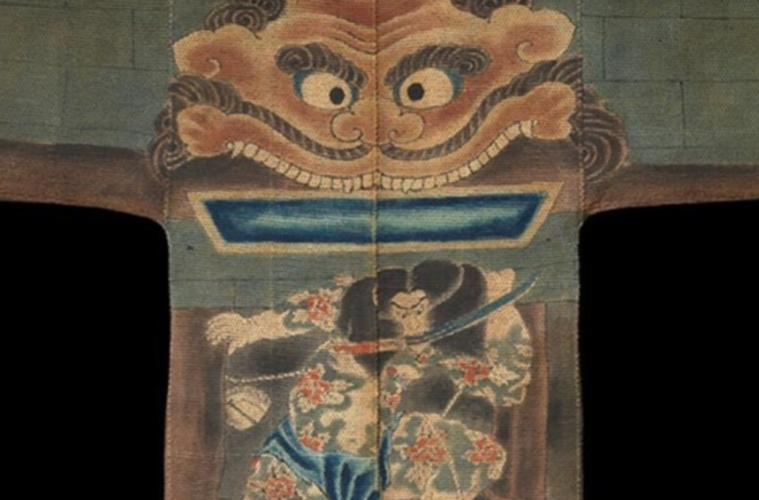Seventy Japanese textiles — including a crimson battle surcoat; a fireman’s quilted jacket; and a silk, embroidered theater costume — collected by John C. Weber ’61 are the foundation of a Metropolitan Museum of Art exhibition called Kimono Style.
Co-curator Monika Bincsik selected pieces from Weber’s collection that date back to the Edo period (1603–1867) and paired them with haute couture from the Met’s Costume Institute in order to tell the story of how the kimono has influenced Western fashion. Vogue called it “an immersive, must-see exhibition that considers the evolution of this foundational garment within Japan and its relation to the West.”
Weber has been collecting Japanese textiles since 1997 through his travels to the country with Julia Meech, who is the curator of his collections. “We were pioneers almost,” he says. “A lot of people had thought that these textiles were just garments. We viewed them as art objects that could be worn.” As Weber began to amass his collection, it started to become well known by scholars and curators from around the world, who visit his home (which is two blocks from the Met) to take a closer look.
“I like sharing what I have,” he says. “[And] I think of it more as a process than what I’ve acquired. It’s the people I see and work with, who, in many ways, make it interesting.”
Weber’s appreciation for art began when he was a pre-med student at Colgate. Looking for a different discipline to balance out his intensive science course load, Weber signed up for art history classes “and very much enjoyed them.”
After graduation, he attended Columbia University, where he studied dental medicine but also continued to take art history classes. In addition, he lived in the International House, which “had an influence on me to broaden my horizon beyond domestic interest.”
Weber became a radiology and anatomy professor as well as a dean at Cornell University Medical College in New York City and served as associate director of New York Hospital. Meanwhile, his interest in art never waned. Throughout the years, he’s collected Rembrandt etchings, Elizabethan furniture, and 17th-century English silver. In 1988, he donated his collection of Chinese art to the Met, which turned it into the Weber Galleries for the Arts of Ancient China.
“Just buying things is a very small part of collecting,” Weber explains. “It’s a catalyst for researching the culture behind it, because every object has a context in which it was made — who supported it, who bought it, where has it been, why is it important?”
Upon retiring in 1998, Weber did not want to “vegetate,” so he decided to focus on two hobbies: improving his art collection and himself. He started running and, as someone who takes every effort seriously, began competing in marathons. After 25 events, he escalated to triathlons. He has done the Ironman in Florida, Western Australia, New Zealand, and seven World Championships in Kona (including a win in his age group at 75). Next year, at 85, he’ll move into a new age group (85–90) when he competes in the World Triathlon Multisport Championship in Spain.
“It’s always good to have something next,” says Weber, who is currently contributing to an upcoming Met exhibition that will feature Buddhist and Shinto items. In the meantime, Kimono Style runs until February 2023, and Weber has permanently donated 40 of the textiles to the museum.

